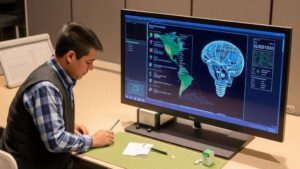Interviewing Descendants of Early Settlers for Stories of Buried Relics
Interviewing Descendants of Early Settlers for Stories of Buried Relics
This research article explores the untapped narratives held by the descendants of early settlers, specifically focusing on the stories surrounding buried relics. These relics, which can range from everyday items to significant historical artifacts, embody cultural heritage and provide crucial insights into the lives of early settlers in various regions, including the American Midwest and the Colonial Northeastern United States.
The Importance of Oral Histories
The practice of interviewing descendants serves as a vital tool in historical research. Oral history allows for the preservation of unique cultural perspectives that are often overlooked in traditional archival research. As historian Daniel Langton notes, “Oral history serves as a crucial bridge between past and present, offering narratives that text-based histories may fail to capture†(Langton, 2019). By focusing on these personal accounts, researchers can gain a better understanding of the societal dynamics of early settler communities.
The Historical Context of Early Settler Communities
Early settlers in America arrived in waves from the late 15th century onwards, predominantly from Europe. For example, the Pilgrims established Plymouth Colony in 1620, while other settlements emerged throughout the 18th and 19th centuries, such as those in the Ohio River Valley. Each community was shaped by the geographical and cultural landscapes they encountered. Notably, the relics buried by these settlers provide insights into their daily lives, struggles, and societal values.
To effectively gather narratives from descendants of early settlers, a structured interviewing process is essential. Researchers should consider the following key steps:
- Preparation: Develop a list of focused questions that cover not only the existence of relics but also family histories.
- Recruitment: Identify and engage descendants through educational institutions, local heritage societies, and genealogy forums.
- Conducting Interviews: Use both in-person and remote interviewing tools to record conversations, ensuring the participant’s comfort and willingness to share.
For example, when interviewing a decedent of settlers from the Ohio River Valley, researchers discovered artifacts such as old farming tools and household items that revealed considerable information about agricultural practices during the 1800s.
Case Studies: Significant Finds from Interviews
Several case studies exemplify the value of these interviews:
- The Johnson Family of Kentucky: Interviews conducted in 2021 led to the discovery of old journals and a buried chest, containing silver spoons and farming implements.
- The Smith Lineage of Massachusetts: In 2019, uncovering oral stories about the burial of items by first-generation settlers provided context for local folklore and kinship patterns.
These findings not only enriched the historical narrative of their respective regions but also connected descendants to their ancestry in profound ways.
Challenges Faced in Collection
While interviewing descendants has immense potential, several challenges may arise:
- Memory Degradation: As generations progress, specific details may become obscured, leading to gaps in historical understanding.
- Skepticism: Some descendants may be reluctant to share stories, fearing misinformation or misrepresentation of their family history.
To mitigate these issues, researchers should establish trust and rapport with participants through clear communication about the research’s goals and potential outcomes.
Real-World Applications
The stories and relics uncovered through interviewing descendants have several practical applications:
- Community Workshops: They can lead to community-led historical workshops fostering greater awareness of local heritage.
- Educational Materials: Findings can be used to create educational curricula for schools that emphasize local history.
For example, the Ohio History Connection has integrated oral histories into their educational outreach programs, thereby enhancing local engagement with history.
Conclusion
To wrap up, interviewing descendants of early settlers is a compelling method of uncovering rich narratives related to buried relics. This research contextualizes artifacts that tell the multifaceted stories of communities, thereby preserving heritage for future generations. By employing thorough methodologies and actively addressing challenges, scholars can continue to enrich our understanding of the past through the stories of descendants.
Actionable Takeaways
- Engage with local historical societies to locate potential interview subjects.
- Develop a structured approach to interviews to maximize the richness of the stories shared.
- Use findings to foster community engagement and education initiatives related to local history.
As we continue to explore and document these narratives, we reinforce our connection to history and the legacies left behind by early settlers.
References
Langton, Daniel. (2019). Bridging Past and Present: The Role of Oral Histories in Historical Scholarship. Journal of Historical Studies.


